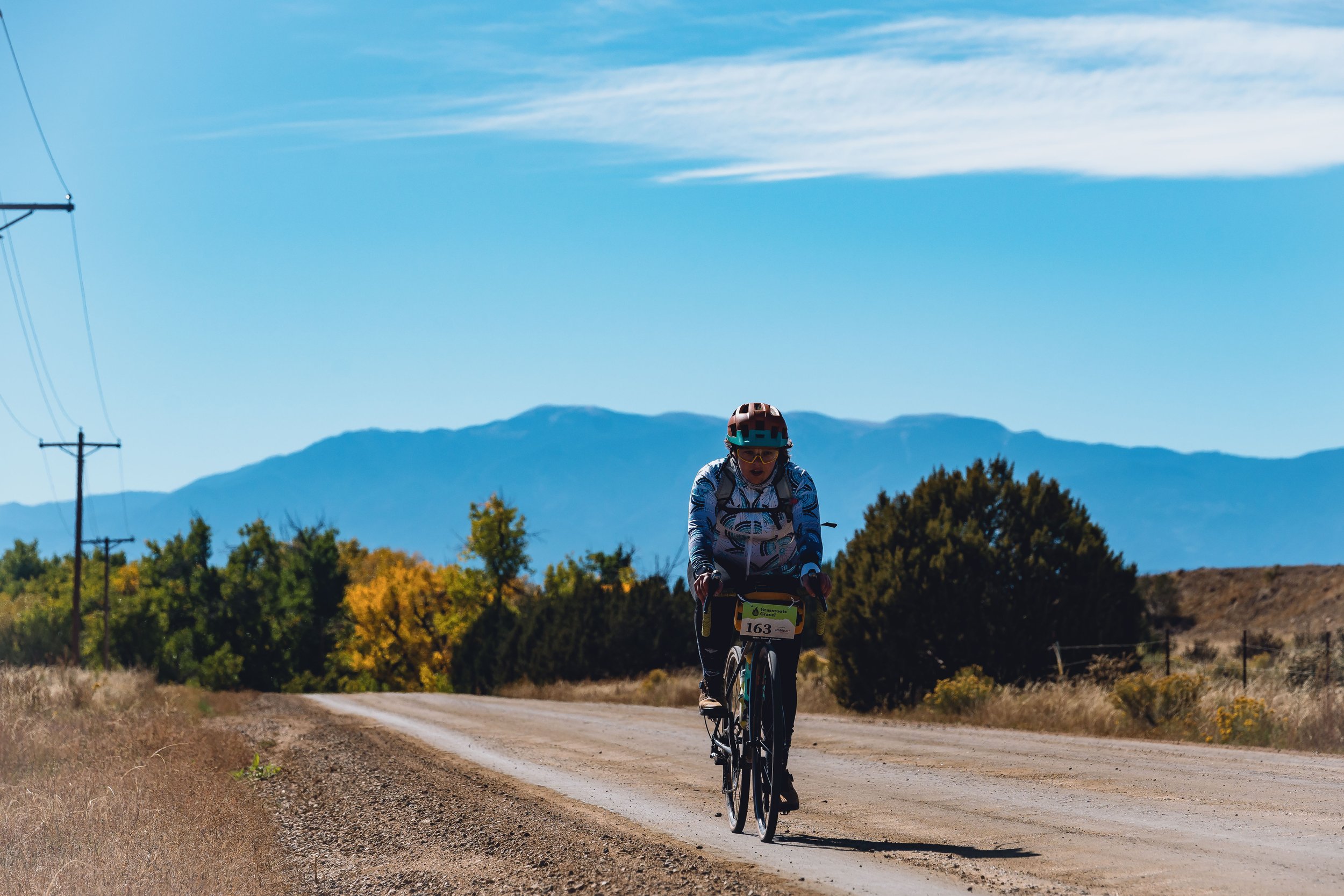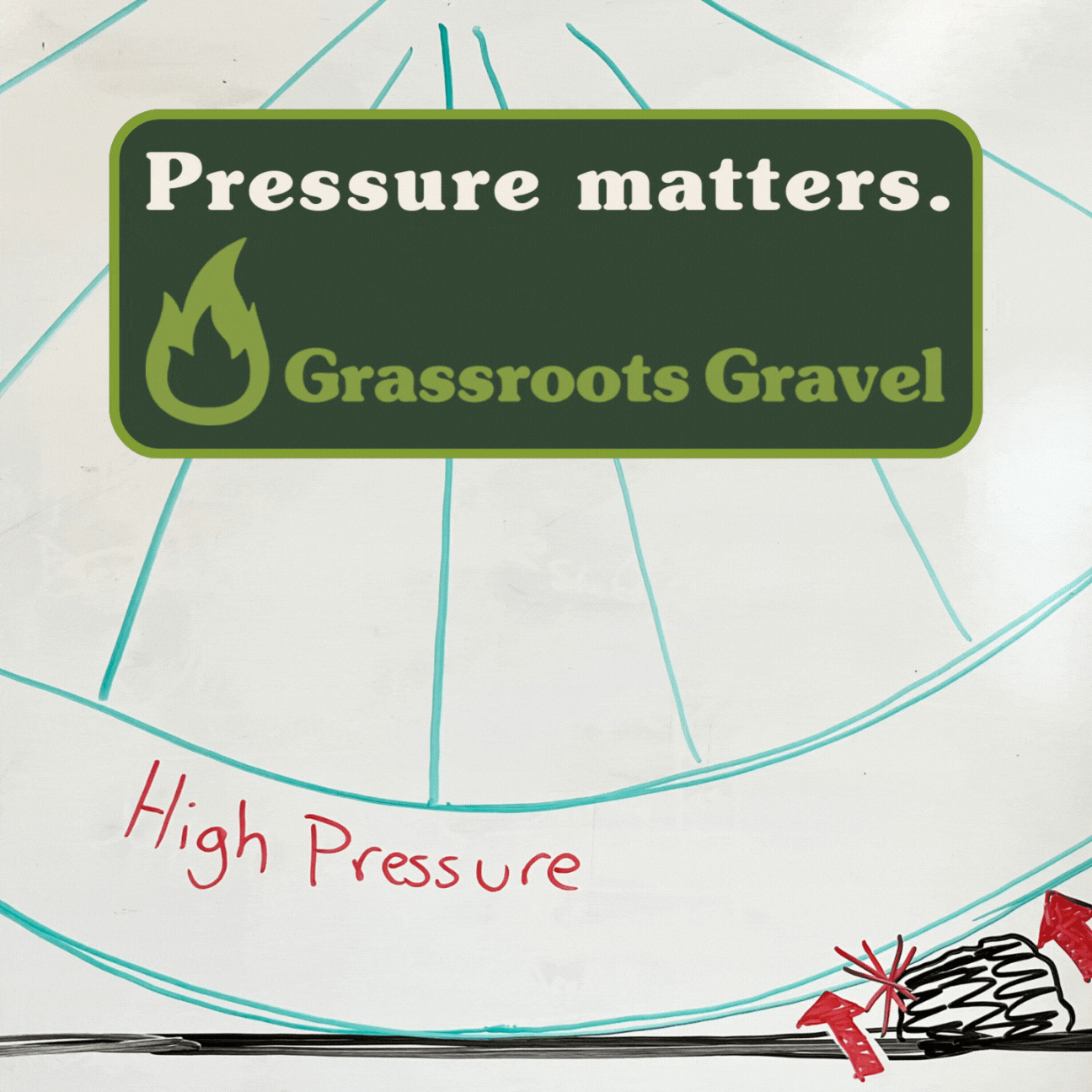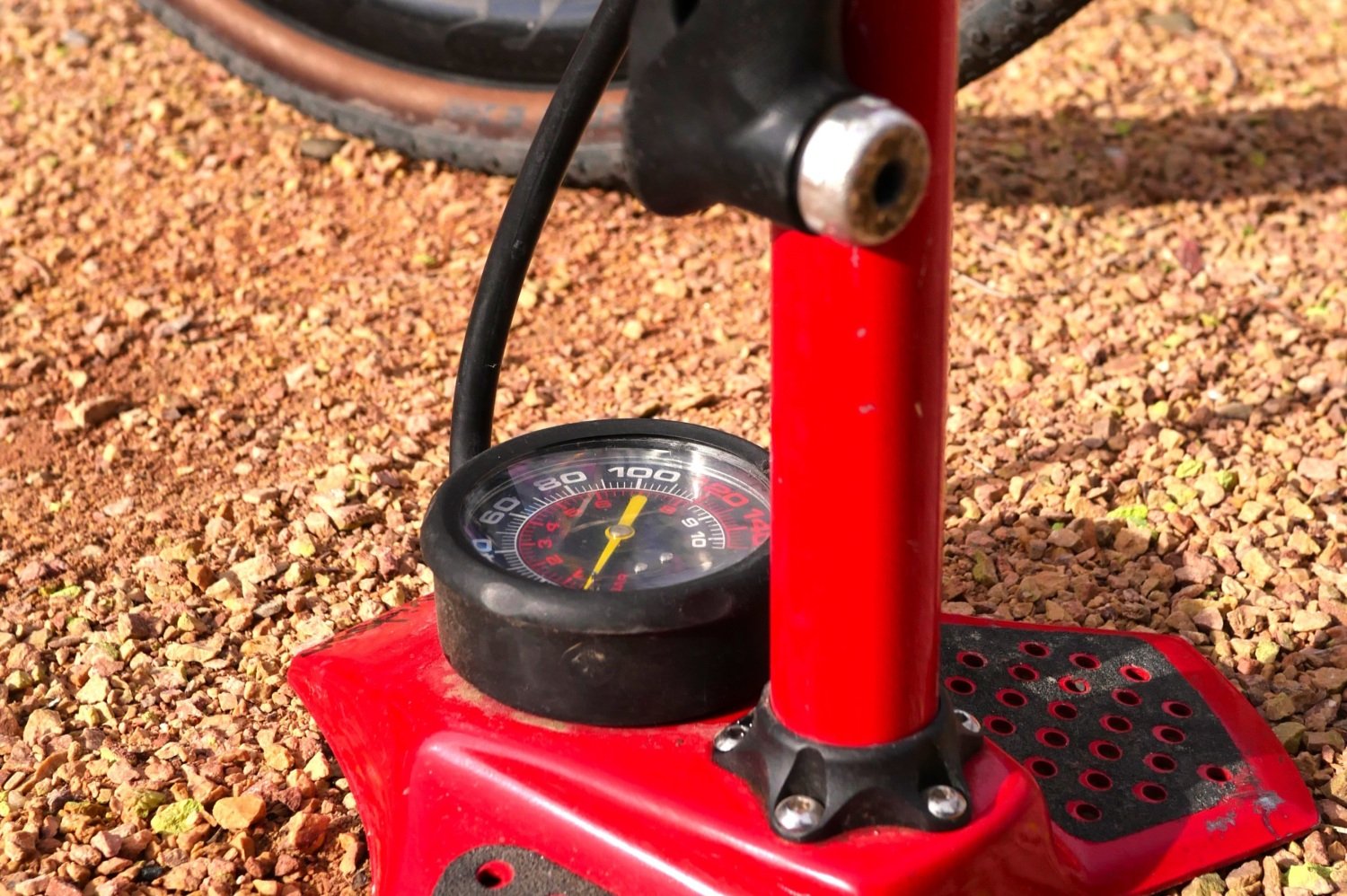
Your tires are your bike’s connection with the ground. That means they’re the foundation for how your bike feels and handles. We’re going to discuss how you can get the most comfort, speed, and control from whatever tires you have on your bike.
We’re going to talk air pressure.
High pressure:
Creates firmer tire that will “fight” impacts and deflect off obstacles
Lower pressure:
Creates supple tire that can absorb impacts and “flow” over obstacles
Thinking about how we think about inflation
Whether you’re a seasoned or brand-new rider, at some point you’ve probably wondered how firm your tires should be or to what pressure you should inflate them. Often, we’ll think that firmer is faster, or that “soft” may be slow or otherwise a problem. Maybe that’s because when we’re walking, firm ground is faster, and soft ground is slower. The thing is, on a bike we’re rolling and not walking…and we’re generally moving at much higher speeds.
In this article, we’ll focus on gravel cycling for our example. We can assume a rider who’s rolling at a decent pace, say 15 miles per hour, and that the terrain is somewhat uneven, like a gravel road with some washboard or small rocks. What we’ll cover here, however, is still applicable to other terrain and riding types.
Fight & Flow
When we are riding along, we have forward momentum. We’ve put the work into the pedals and drivetrain, and we’ve got our bodies and bikes moving forward. If we’re on a smooth road, the energy we apply is (for the most part) pretty much exclusively making us move forward. In a perfect world, we’d want all of the energy we apply at the pedals to move us forward. If that energy is doing anything other than moving us forward, we’re getting less “go” from our work. It’s not efficient. And that’s a bummer, right?
When we’re rolling forward on a road and go over a rock or bump, there’s a potential for that small impact to redirect our forward energy to something else. For example, the classic upward jolt you get as a rider when you hit a rock, a pothole, or other object. When that happens, some of your forward energy is now pushing you up. Or maybe to one side. What a waste. And it can be uncomfortable too, right?
If your tires are firm (inflated to a higher pressure), they will not deform much when you roll over a rock or washboard. Because your tire isn’t absorbing the impact, the tire will sort of “fight” the rock or washboard. Combining your forward momentum with that impact or “fight” results in your tire (and you) deflecting off the object in some other direction. That deflection from the “fight” is the bump you feel or the jolt of the bars that forces you to correct your direction while riding. You lose forward momentum and have to deal with discomfort or loss of control.
If your tires are at a more appropriate lower pressure, they will deform when you roll over the rock or washboard. The tire absorbs the object, minimizing any major impact or “fight”, and allowing the bike to “flow” right over the object. In this case, your energy is still pretty much all in your forward momentum. Minimal waste…plus there’s no jolt at the handlebars or bump to your saddle.
We want to flow. It maintains more of our forward momentum (less waste of that energy) and there is less impact on the rider (we aren’t wasting energy with control or body position corrections). So we want appropriate pressure, which means a more supple tire than you may be used to.
So…what is my proper tire pressure for gravel?
Fortunately, there are some great (free!) online tools to calculate proper tire pressure. The good folks at SILCA have created a very comprehensive tire pressure calculator, which we’ve linked below. This isn’t sponsored content…they simply did a great job creating and sharing this tool.
When you’re figuring out your proper tire pressure, it’s important to take into account the condition of terrain you’ll be riding. SILCA has us covered there also with their surface condition table.
Now what?
We tried to keep things somewhat simple in this article, but there’s a ton to learn and experience. Set your tire pressure and go ride some familiar gravel roads or other segments. See how it feels to you and make adjustments if you want. Chat about your experiences with friends and compare thoughts. Remember: your ride is your ride. Make it what you want and what you enjoy.
Some considerations
Many modern bikes are tubeless, which means that they literally do not have tubes in the tires. There is a special sealant in the tire, and the tire itself seals directly against the rim. If you’re using tubes, lower pressure will still yield a more supple ride and better “flow” over small rocks and washboard. However, if you’re running low pressure with tubes, you run the risk of a “pinch flat” or “snakebite” puncture if there’s a particularly hard impact that bottoms the tire against the rim. This can’t really happen with a tubeless system, which is one reason the industry has heavily shifted that direction.
Now go have fun.



